Raymond S. Sinatra, Oscar A. de Leon-Cassasola, Eugene R. Viscusi, Brian Ginsberg, Henry McQuay0521874912, 9780521874915, 9780511518065
Table of contents :
Half-title……Page 3
Title……Page 5
Copyright……Page 6
Contents……Page 7
Contributors……Page 9
Acknowledgments……Page 15
Foreword: Historical Perspective, Unmet Needs, and Incidence……Page 17
REFERENCE……Page 18
Acute Pain Management……Page 19
SECTION I Pain Physiology and Pharmacology……Page 21
CLASSIFICATION OF PAIN……Page 23
PAIN PERCEPTION……Page 24
TRANSDUCTION……Page 25
TRANSMISSION……Page 28
MODULATION……Page 30
CORTICAL PERCEPTION AND RESPONSES……Page 32
TRANSITIONS FROM ACUTE TO PERSISTENT PAIN……Page 34
NEUROPATHIC PAIN……Page 36
REFERENCES……Page 37
HYPERALGESIA……Page 41
SYMPATHOADRENAL RESPONSES……Page 42
NEUROENDOCRINE RESPONSES……Page 43
Lungs……Page 44
Injury Site……Page 45
Central Nervous System……Page 46
ATTENUATION OF PAIN-INDUCED PATHOPHYSIOLOGY……Page 47
Cytokine Response……Page 48
Persistent Pain……Page 49
REFERENCES……Page 50
AGE……Page 53
CULTURE OR RACE……Page 54
PSYCHOLOGICAL FACTORS……Page 55
PATIENT SIZE AND OPIOID PHARMACOKINETICS……Page 56
PATIENTS WITH ORGAN IMPAIRMENT OR FAILURE……Page 57
REFERENCES……Page 58
CONCEPTUAL BACKGROUND……Page 61
Anxiety……Page 62
Pain-Related Anxiety and Fear……Page 63
Social Context……Page 64
Distraction……Page 65
Cognitive-Behavioral Therapy……Page 66
Hypnosis……Page 67
Virtual Reality……Page 68
FUTURE DIRECTIONS……Page 69
REFERENCES……Page 70
Coxibs……Page 73
Prostaglandin Synthesis……Page 74
Inhibition of Neutrophil Aggregation……Page 75
General Principles……Page 76
Naphthylalkalones……Page 77
Acetaminophen……Page 78
Ibuprofen……Page 79
Ketorolac……Page 80
Celecoxib……Page 81
SIDE EFFECTS……Page 82
Peptic Ulcers……Page 83
Platelet Clotting Function……Page 84
NSAIDs and Renal Function……Page 85
CONCLUSION……Page 86
REFERENCES……Page 87
ELECTROPHYSIOLOGY OF Na+ CHANNELS……Page 90
LOCAL ANESTHETIC ACTIONS AT SITES UNRELATED TO Na+ CHANNELS OR NERVE BLOCK……Page 91
PHYSICOCHEMICAL PROPERTIES OF LOCAL ANESTHETICS……Page 92
MAXIMUM DOSES……Page 93
USE OF ADDITIVES WITH LOCAL ANESTHETIC SOLUTIONS……Page 94
TOXIC SIDE EFFECTS OF LOCAL ANESTHETICS……Page 96
CARDIOVASCULAR TOXICITY……Page 97
REFERENCES……Page 98
α2-Adrenergic Receptors and Pain Modulation……Page 102
Pharmacology of Analgesia under Different Pain Conditions……Page 104
Pharmacology of Clinically Available Adrenergic Agonists as Analgesics: Clonidine and Dexmedetomidine……Page 105
Nonanalgesic Effects Resulting from Clonidine and α2-AR Agonist Administration……Page 107
Interactions with Other Analgesics……Page 108
NMDA Receptors and Pain Modulation……Page 109
Pharmacology under Different Pain States……Page 110
Pharmacology of Ketamine and s(+)Ketamine……Page 111
Interaction with Other Analgesics……Page 112
Anticonvulsants and Voltage-Gated Calcium Channels for Pain Modulation……Page 113
Postoperative Pain Condition……Page 114
Synergy with Other Analgesics……Page 116
REFERENCES……Page 117
8 Pharmacokinetics of Epidural Opioids……Page 122
Pharmacokinetics of Epidurally Administered Opioids……Page 123
Selected Epidural Fentanyl Clinical Trials……Page 125
Selected Immediate and Extended Epidural Morphine Clinical Trials……Page 126
REFERENCES……Page 127
PROGRESSION FROM ACUTE TO CHRONIC PAIN……Page 129
INTERVENTIONS TO DECREASE PERSISTENT POSTSURGICAL PAIN……Page 130
REFERENCES……Page 132
Clinical Implications of Growing Opioid Use……Page 134
Differentiation of Opioid Tolerance and Opioid-Induced Hyperalgesia……Page 135
Acute Opioid Tolerance……Page 136
Tolerance after Chronic Administration……Page 137
Opioid Receptor Desensitization and Trafficking……Page 138
Protein Kinase Activation……Page 139
Cytokines and Innate Immunity……Page 140
OIH Occurrence under Common Therapeutic Conditions: Human Evidence……Page 141
Acute Opioid Exposure in Healthy Volunteers using Experimental Pain Methods……Page 142
Peripheral Effects of OIH……Page 143
Opioid Distribution……Page 144
Ketamine Modulation of OIH……Page 145
Methadone and Opioid Switching for Modulation of OIH……Page 147
Intraoperative Considerations……Page 148
Adjuvant Medications……Page 150
NMDA Receptor Antagonists……Page 151
Peripheral Nerve Blockade……Page 152
A Dearth of High-Quality Clinical Evidence……Page 153
REFERENCES……Page 154
SECTION II Clinical Analgesia……Page 165
HISTORY OF PAIN ASSESSMENT……Page 167
TYPES OF PAIN……Page 169
Observer Pain Scores……Page 170
Verbal Rating Scale……Page 171
Visual Analog Scale……Page 173
The OLD CART Acronym……Page 174
McGill Pain Questionnaire……Page 176
Behavioral/Observational Pain Assessment Tools……Page 177
Adjunctive Pain Assessment Tools……Page 178
Assessing Patient Satisfaction and Comfort……Page 179
Pain Assessment Considerations in Racial and Ethnic Minorities……Page 180
Pain Assessment Considerations in the Elderly……Page 181
Pain Assessment Considerations in Critically Ill Patients……Page 182
Pain Assessment in Pediatric Patients……Page 183
BARRIERS TO PAIN CONTROL……Page 184
Health Care Provider Barriers……Page 185
CONCLUSIONS……Page 186
APPENDIX……Page 187
REFERENCES……Page 189
PHYSIOLOGY OF PERIPHERAL AND CENTRAL SENSITIZATION……Page 192
PREEMPTIVE ANALGESIA……Page 193
MULTIMODAL ANALGESIA……Page 195
α2 Agonists (Clonidine, Dexmedetomidine)……Page 196
Nonsteroidal Anti-Inflammatory Drugs and Acetaminophen……Page 197
Ketamine……Page 198
Wound Infiltration……Page 199
Preemptive Analgesia with Local Anesthetics……Page 200
Opioids (Peripheral and Central)……Page 201
MULTIMODAL ANALGESIA AND CLINICAL OUTCOMES……Page 202
REFERENCES……Page 203
Opioid Receptors……Page 208
Pharmacokinetics……Page 210
Opioid Tolerance and Hyperalgesia……Page 211
Opioid Classification……Page 212
Hydrocodone……Page 213
Methadone……Page 214
Sufentanil……Page 215
PARENTERAL OPIOID THERAPY……Page 216
ORAL ANALGESIC DOSING……Page 217
OPIOID-RELATED ADVERSE EVENTS……Page 219
FUTURE DIRECTIONS WITH ORAL AND PARENTERAL OPIOIDS FOR ACUTE PAIN……Page 220
REFERENCES……Page 221
14 Intravenous Patient-Controlled Analgesia……Page 224
Intranasal PCA……Page 225
Ketamine……Page 226
Patient Education……Page 227
Nursing Procedure Protocols……Page 228
Bolus Dose……Page 229
Background Infusion……Page 230
PATIENTS WITH RENAL IMPAIRMENT……Page 231
Patient-Related Errors……Page 232
Respiratory Depression……Page 233
Normeperidine Toxicity……Page 234
What If the Pain Medicine Doesn’t Work?……Page 235
REFERENCES……Page 236
Opioids……Page 241
Epidural Hydromorphone……Page 242
Epidural Local Anesthetics……Page 243
Complications Related to the Placement, Migration, or Removal of the Catheter……Page 244
Epidural Hematoma……Page 245
Respiratory Depression……Page 246
REFERENCES……Page 247
Intrathecal Bolus Dosing……Page 250
Epidural Bolus Dosing……Page 252
Fentanyl Infusions……Page 253
Hydromorphone Infusions……Page 254
Hydromorphone PCEA……Page 255
Respiratory Depression……Page 256
History and Evolution……Page 257
Dosing Guidelines……Page 258
NOVEL OPIOIDS FOR NEURAXIAL ANALGESIA: BUPRENORPHINE……Page 259
APPENDIX……Page 260
Treatment of Respiratory Depression and Other Adverse Effects……Page 261
REFERENCES……Page 262
MULTIMODAL ANALGESIA……Page 265
LOGISTICS AND EQUIPMENT NEEDED FOR THE PERFORMANCE OF REGIONAL ANESTHESIA……Page 266
Anatomy of the Brachial Plexus……Page 267
INTERSCALENE BLOCKADE……Page 268
Nerve Stimulation Technique……Page 269
Ultrasound-Guided Technique……Page 270
Nerve Stimulation Technique……Page 271
Ultrasound-Guided Technique……Page 272
Anatomy of Brachial Plexus below Clavicle……Page 273
Complications of Infraclavicular Nerve Block……Page 274
Anatomy of the Brachial Plexus at the Axillary Level……Page 275
Block Techniques……Page 276
Nerve Stimulator Technique……Page 277
Ultrasound-Guided Technique……Page 278
Complications of Axillary Brachial Plexus Block……Page 279
Nerve Stimulator Technique……Page 280
WRIST BLOCK……Page 282
Blind……Page 284
Peripheral Nerve Stimulation……Page 285
Anatomy of the Lumbosacral Plexus……Page 286
Psoas Compartment Blockade (Posterior Approach to the Lumbar Plexus)……Page 287
Peripheral Nerve Stimulation……Page 288
Pearls……Page 289
FEMORAL NERVE BLOCKADE……Page 290
Ultrasound-Guided Technique……Page 291
Pearls……Page 293
Classic Sciatic (Labat)……Page 294
Popliteal Sciatic……Page 296
Local Anesthetic Toxicity……Page 300
Peripheral Nerve Injuries……Page 301
REFERENCES……Page 302
PATIENT SELECTION FOR AMBULATORY REGIONAL ANESTHESIA AND ANALGESIA……Page 307
PERIPHERAL NERVE BLOCKS FOR POSTOPERATIVE ANALGESIA IN OUTPATIENTS……Page 308
Interscalene Brachial Plexus Block……Page 309
Supraclavicular Brachial Plexus Block……Page 310
Infraclavicular Brachial Plexus Block……Page 311
Distal Upper Extremity Nerve Blocks……Page 312
Femoral Nerve Block……Page 313
Proximal Sciatic Nerve Block……Page 314
Paravertebral Nerve Block……Page 315
WOUND INFILTRATION FOR POSTOPERATIVE ANALGESIA IN OUTPATIENTS……Page 316
REFERENCES……Page 318
Early History……Page 322
Design Theory……Page 323
Basic Considerations……Page 324
Clinical Management……Page 325
Safety……Page 326
Analgesic Infusion Pump Technology……Page 328
Future IV-PCA Technology: Pharmacokinetic Drug Delivery Systems……Page 330
Hospira Gemstar……Page 331
Hospira LifeCare PCA 3……Page 332
Smiths Medical CADD-Prizm PCS II……Page 333
Basic Considerations……Page 334
Clinical Management……Page 335
Systems……Page 336
Background……Page 337
Basic Considerations……Page 338
Elastomeric Pumps……Page 339
Spring-Powered Pumps……Page 340
REFERENCES……Page 341
ADVANCES IN TRANSDERMAL DRUG DELIVERY……Page 343
IONTOPHORESIS……Page 345
FENTANYL IONTOPHORETIC TRANSDERMAL SYSTEM……Page 346
EXTENDED RELEASE EPIDURAL MORPHINE……Page 347
REFERENCES……Page 349
21 Nonselective Nonsteroidal Anti-Inflammatory Drugs, COX-2 Inhibitors, and Acetaminophen in Acute Perioperative Pain……Page 352
USE OF THE NSAIDS IN THE MANAGEMENT OF SURGICAL PAIN……Page 355
Preincisional Use of NSAIDs for Surgical Pain……Page 362
COX-2 Inhibitors in Perioperative Pain……Page 366
Use of Rofecoxib in Surgical Pain……Page 367
Use of Valdecoxib and Its Prodrug Parecoxib in Surgical Pain……Page 370
Use of Etoricoxib in Postsurgical Pain……Page 373
Hematologic and Cardiovascular Effects of the NSAIDs versus the COX-2 Inhibitors……Page 375
USE OF ACETAMINOPHEN IN POSTSURGICAL PAIN……Page 376
Intravenous Acetaminophen (Paracetamol) in Postsurgical Pain……Page 378
SUMMARY AND CONCLUSION……Page 379
REFERENCES……Page 381
Preemptive Analgesic Effect of Ketamine……Page 386
Enhancement of Opioid-Induced Analgesia: Postoperative Infusion of Ketamine……Page 387
Remifentanil-Induced Hyperalgesia and Preventive Effect of Ketamine……Page 388
INTRAVENOUS PCA……Page 389
KETAMINE INFUSION FOR THORACIC SURGERY……Page 390
EPIDURAL ADMINISTRATION OF KETAMINE……Page 391
CONCLUSION……Page 392
REFERENCES……Page 395
Overview……Page 397
Effect Mechanisms……Page 398
Clinical Actions of Glucocorticoids……Page 399
Clinical Analgesic Action……Page 401
Calcium Channel Blockers: Gabapentin and Pregabalin……Page 402
α2-ADRENERGIC RECEPTOR AGONISTS……Page 403
Nonpharmacological Approaches……Page 404
Peroperatively, Early Phase……Page 405
Other Types of Acute Pain……Page 406
REFERENCES……Page 407
24 Nonpharmacological Approaches for Acute Pain Management……Page 411
ACUPUNCTURE……Page 412
ACUPUNCTURE FOR POSTOPERATIVE PAIN……Page 415
TRANSCUTANEOUS ELECTRICAL NERVE STIMULATION……Page 417
MAGNETISM……Page 419
THERAPEUTIC TOUCH AND MASSAGE……Page 420
HYPNOSIS……Page 421
MUSIC THERAPY……Page 422
CONCLUSIONS……Page 423
REFERENCES……Page 424
RESPIRATORY ADVERSE EFFECTS……Page 426
GASTROINTESTINAL ADVERSE EFFECTS……Page 427
OPIOID-INDUCED NAUSEA AND VOMITING……Page 428
DERMATOLOGICAL ADVERSE EFFECTS……Page 431
CONCLUSION……Page 432
REFERENCES……Page 433
DEFINITION AND INCIDENCE OF OPIOID-INDUCED RESPIRATORY DEPRESSION IN THE PERIOPERATIVE PERIOD……Page 436
ANATOMY AND PHYSIOLOGY OF RESPIRATION……Page 438
MECHANISMS OF OPIOID-INDUCED RESPIRATORY DEPRESSION……Page 439
Measurement of Opioid-Induced Respiratory Depression……Page 440
INFLUENCE OF SLEEP DISTURBANCE ON OPIOID-INDUCED RESPIRATORY DEPRESSION……Page 441
MONITORING……Page 442
Role of Respiratory Rate in Monitoring……Page 444
PREDICTING OPIOID-INDUCED RESPIRATORY EVENTS IN THE POSTOPERATIVE SETTING……Page 445
CONCLUSIONS……Page 446
REFERENCES……Page 447
SECTION III Acute Pain Management in Special Patient Populations……Page 451
TYPES OF ORGANIZATIONS……Page 453
COMMUNICATION……Page 456
HUMAN RESOURCE MANAGEMENT……Page 457
OPERATION AND PRODUCTION MANAGEMENT……Page 458
ECONOMICS……Page 459
REFERENCES……Page 460
Appendices……Page 462
Infrastructure Challenges……Page 475
Assuming Leadership Roles in Acute Pain Management……Page 476
Nonsurgeon Physicians……Page 477
Multimodal Analgesia……Page 478
Pain Management Options……Page 480
Intravenous PCA……Page 486
Continuous Epidural Analgesia……Page 487
Continuous Perineural Analgesia……Page 488
Avoid Delays……Page 489
Follow-Up for Inpatients……Page 490
Quality Improvement……Page 491
REFERENCES……Page 494
PAIN FOLLOWING AMBULATORY SURGERY……Page 496
Multimodal Therapy……Page 498
Nonsteroidal Anti-Inflammatory Drugs……Page 499
Anticonvulsant-Type Analgesics……Page 500
Regional Blockade……Page 501
Transcutaneous Electrical Nerve Stimulation……Page 502
CONCLUSION……Page 503
REFERENCES……Page 504
PROCEDURE-RELATED PAIN……Page 507
OPERATIVE AND POSTTRAUMATIC PAIN……Page 508
Faces Pain Scale……Page 509
Children’s and Infants’ Postoperative Pain Scale……Page 510
The Pediatric Pain Profile……Page 511
The Non-Communicating Children’s Pain Checklist – Postoperative Version (NCCPC-PV)……Page 512
Nonsteroidal Anti-Inflammatory Drugs……Page 513
Opioids……Page 514
Major Opioids……Page 515
LOCAL ANESTHETICS……Page 516
CENTRAL BLOCKS IN CHILDREN……Page 517
Single-Shot Technique……Page 518
Contraindications……Page 519
Continuous Technique……Page 520
Complications……Page 522
BRACHIAL PLEXUS BLOCK……Page 523
Continuous Technique……Page 524
Single-Shot Technique……Page 525
Continuous Technique……Page 526
Subgluteal Approach……Page 527
Popliteal Approach……Page 528
PENILE BLOCK……Page 529
Technique……Page 530
REFERENCES……Page 531
DEFINITION OF ELDERLY……Page 534
EFFECT OF AGING ON THE NERVOUS SYSTEM……Page 535
POSTOPERATIVE COGNITIVE DYSFUNCTION……Page 536
PHARMACODYNAMIC ALTERATIONS IN THE ELDERLY……Page 540
NEURAXIAL REGIONAL ANALGESIA AND PERIPHERAL NERVE BLOCKADE VERSUS OPIOID-BASED ANALGESIA……Page 541
CHOICE OF ANESTHESIA AND ANALGESIA: IMPACT ON POSTOPERATIVE COGNITIVE FUNCTION IN ELDERLY PATIENTS……Page 543
CHOICE OF ANESTHESIA AND ANALGESIA: IMPACT ON POSTOPERATIVE CARDIOVASCULAR FUNCTION IN THE ELDERLY……Page 546
CHOICE OF ANESTHESIA AND ANALGESIA: EFFECT ON POSTOPERATIVE PULMONARY FUNCTION IN THE ELDERLY……Page 547
CHOICE OF ANESTHESIA AND ANALGESIA: EFFECT ON POSTOPERATIVE ENDOCRINE AND IMMUNE FUNCTION……Page 549
CHOICE OF ANESTHESIA AND ANALGESIA: EFFECT ON POSTOPERATIVE OUTCOMES IN ELDERLY PATIENTS……Page 550
CONCLUSIONS……Page 553
REFERENCES……Page 554
32 Postcesarean Analgesia……Page 557
Lipophilic Opioids……Page 558
Side Effects……Page 559
Intrathecal Analgesia……Page 563
Intravenous Patient-Controlled Analgesia……Page 564
NEONATAL CONSIDERATIONS……Page 565
REFERENCES……Page 568
PATHOPHYSIOLOGY……Page 570
General Considerations in Pain Assessment……Page 571
General Principles……Page 572
Cognitive-Behavioral Techniques……Page 573
Nonopioid Analgesics……Page 574
OPIOIDS……Page 575
Patient-Controlled Analgesia in Sickle Cell Disease……Page 576
BARRIERS TO ADEQUATE TREATMENT……Page 577
REFERENCES……Page 578
More Patients on Prescription Opioids……Page 584
More Patients on Opioid Agonist Maintenance Therapy……Page 585
ISSUES SPECIFIC TO ACUTE PAIN MANAGEMENT IN THESE PATIENTS……Page 586
PATIENT ASSESSMENT ISSUES……Page 587
Broad Goals and Strategies……Page 590
Opioid Medications……Page 591
Patients on Opioid Agonist Maintenance Therapy……Page 592
Postoperative Period……Page 594
Dose Tapering……Page 595
REPRESENTATIVE CASE MANAGEMENT……Page 596
Case 3……Page 597
REFERENCES……Page 598
SECTION IV Specialist Managed Pain……Page 601
POSTOPERATIVE BOWEL DYSFUNCTION……Page 603
OPIOID EFFECTS ON BOWEL FUNCTION……Page 604
NSAIDS AND COX-2 INHIBITORS……Page 605
PERIPHERAL OPIOID ANTAGONISTS……Page 606
CONCLUSION……Page 607
REFERENCES……Page 608
THE PROBLEM OF EMERGENCY DEPARTMENT OLIGOANALGESIA……Page 609
PAIN TREATMENT AND PROCEDURAL SEDATION IN THE ED……Page 610
OPIOIDS……Page 611
PROCEDURAL SEDATION AND ANALGESIA……Page 612
REFERENCES……Page 614
THE ACUTE PAIN SERVICE CLINICAL COORDINATOR……Page 617
Advanced Practice Registered Nurses……Page 618
Delineate Responsibilities……Page 619
Clinical Practice……Page 621
Multidisciplinary Education……Page 622
Pain Resource Nurse Programs……Page 623
Pain Assessment in Nonverbal Patients……Page 624
Range Order Administration……Page 625
REFERENCES……Page 626
MEDICATION THERAPY MANAGEMENT……Page 627
MANAGEMENT OF SCHEDULE II NARCOTICS……Page 628
Drug Formularies……Page 629
INFUSION DEVICE SELECTION CONSIDERATIONS……Page 630
INTRASPINAL SOLUTION PREPARATION, STABILITY, AND STERILITY……Page 631
Opioids……Page 632
ROLE OF THE PHARMACIST IN REDUCING PAIN MEDICATION ERRORS……Page 634
DEVELOPMENT OF STANDARD ORDER SETS……Page 635
PCA Orders……Page 636
REFERENCES……Page 637
SECTION V Pain Management and Patient Outcomes……Page 641
REVENUE……Page 643
Explicit, Implicit, and Total Cost……Page 645
Total, Average, and Marginal Costs……Page 646
Opportunity Costs……Page 647
Cost-Benefit and Cost-Effective……Page 648
REFERENCES……Page 649
DISTINGUISHING FEATURES OF EBM……Page 650
SYNTHESIZING MEDICAL EVIDENCE……Page 651
CHALLENGES TO THE PRACTITIONER OF EVIDENCE-BASED MEDICINE……Page 652
LIMITATIONS OF EVIDENCE-BASED MEDICINE……Page 653
EVIDENCE-BASED MEDICINE IN ACUTE PAIN MANAGEMENT……Page 654
REFERENCES……Page 655
MORTALITY……Page 657
CARDIOVASCULAR MORBIDITY……Page 658
PULMONARY MORBIDITY……Page 659
GASTROINTESTINAL MORBIDITY……Page 660
COAGULATION-RELATED MORBIDITY……Page 661
PATIENT-REPORTED OUTCOMES……Page 662
SUMMARY……Page 663
REFERENCES……Page 664
WHAT IS THE PURPOSE OF A CLINICAL TRIAL?……Page 666
HOW WAS THE PRIMARY EFFICACY VARIABLE DEFINED?……Page 667
Significant Pain Reduction……Page 669
Summary Measures……Page 670
ARE THE RESULTS BELIEVABLE?……Page 671
REFERENCES……Page 673
MEASUREMENT OF QUALITY IN HEALTH CARE……Page 675
Selection of Quality Measures……Page 676
Six Sigma……Page 677
Lean Methodology……Page 678
DEVELOPMENT, IMPLEMENTATION, AND MAINTENANCE OF A CONTINUOUS QUALITY IMPROVEMENT PROGRAM FOR ACUTE PAIN MANAGEMENT……Page 679
Development of a Continuous Quality Improvement Program for Acute Pain Management……Page 680
Implementation of a Continuous Quality Improvement Program in Acute Pain Management……Page 683
QUALITY IMPROVEMENT INDICATORS AND MEASURES IN ACUTE PAIN MANAGEMENT……Page 684
Patient Safety……Page 685
Quality Indicators and Measures in Day Surgery Settings……Page 686
SUMMARY AND CONCLUSIONS……Page 687
REFERENCES……Page 688
ACUTE PAIN MANAGEMENT IN THE PAST……Page 690
WHO WILL MANAGE POSTOPERATIVE PAIN IN THE FUTURE?……Page 691
NEW ANALGESICS……Page 692
FUTURE DELIVERY MECHANISMS……Page 694
DOES UNCONTROLLED ACUTE PAIN EFFECT OUTCOMES?……Page 695
REFERENCES……Page 697
Index……Page 699
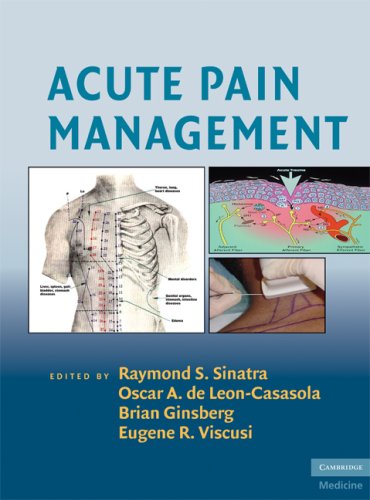

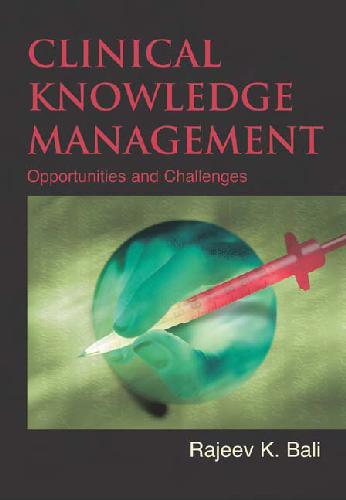
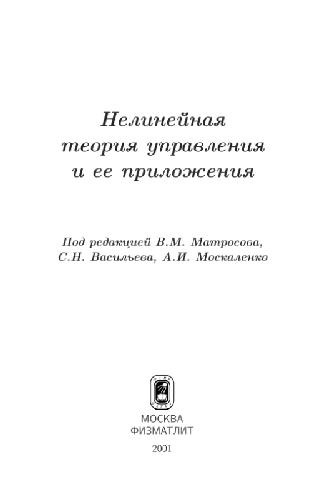
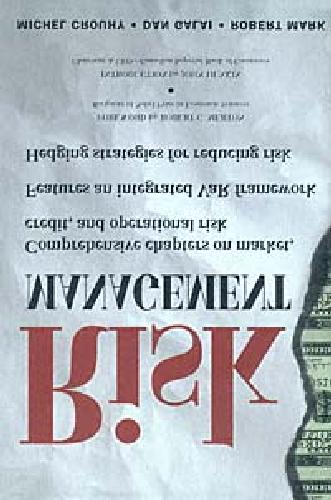
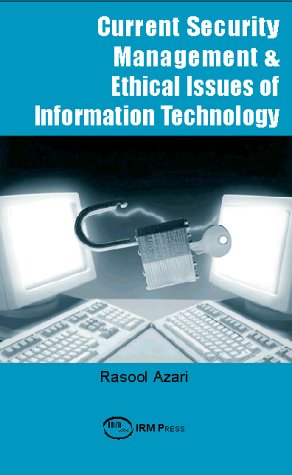
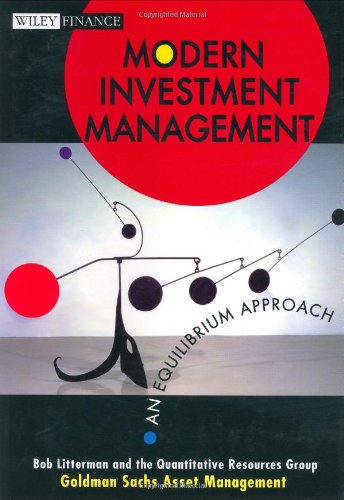
Reviews
There are no reviews yet.